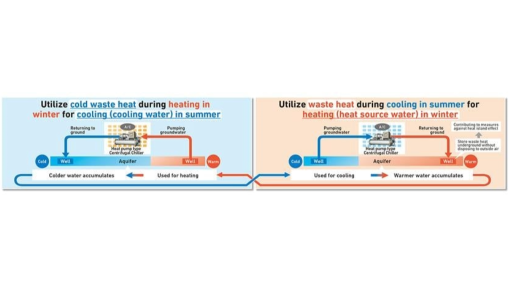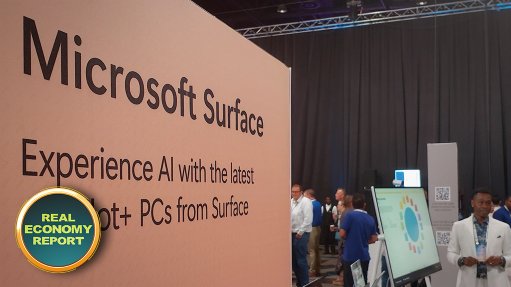Green hydrogen to be phased in to decarbonise steel production – Fitch Solutions
In the second part of its special coverage on the impact of hydrogen on the mining and metals sector, Fitch Solutions Country Risk & Industry Research (Fitch Solutions) reports that it believes green hydrogen will be adopted in the metals sector, in particular in the steel sector, in the longer term.
Green hydrogen will be increasingly used to decarbonise steel production, which is now a priority for many steelmakers in developed markets, as the steel industry accounts for about 9% of global carbon dioxide emissions, largely from blast furnace-based steelmaking, Fitch Solutions notes.
The company points out that major steelmakers are already actively developing plans to adopt green hydrogen to meet carbon neutral goals, and so-called “green steel” strategies have sprouted in recent months, in line with Fitch Solutions' report ‘Mining & Metals Key Views for 2021’.
However, Fitch Solutions also notes that the production of green steel using renewable hydrogen is in an early stage of development, with the majority of investment targeting electrolysis capacity installations.
Green hydrogen can be applied to the steel production process in two ways. First, green hydrogen can be used as an alternate to coking coal in pulverised coal injection. This method does not replace coking coal as a reducing agent in the blast furnace and thus cannot result in carbon-neutral steel.
To create pure green steel, Fitch Solutions points out that green hydrogen must be used as a reductant though the direct reduced iron/electric arc furnace (DRI/EAF) process. Through DRI, iron-ore pellets are reduced with green hydrogen, with vapour as the only emission. The DRI is then heated in the EAF along with steel scrap, producing raw steel.
Fitch Solutions notes that the potential decarbonisation of the steel sector presents upside risk to steel production within developed markets. The company also highlights that governments’ financial support to the steel sector in developed markets has been low in recent years, but it could rise significantly in the future amid many governments having set goals to reach carbon neutrality in the next few decades.
In fact, Fitch Solutions says steel decarbonisation financial support, rising European Union (EU) carbon prices, more stringent emission standards, and the EU’s latest carbon reduction targets, as well as the tabled EU carbon border tax, may all add support for the production of low-carbon steel.
For instance, the company says that, within the EU Emissions Trading Scheme, Emissions Cap Phase 4 (2021-2030) will see the number of emission allowances declining at an increasing rate of 2.2% year-on-year compared with the current 1.7%.
Taken together, Fitch Solutions says that measures could support a revival in steel production in developed markets.
The green hydrogen industry is still relatively nascent and larger-scale production systems are yet to come on line, the company says. Therefore, it notes that green steel production will depend on technologies and infrastructure for producing and handling green hydrogen on a commercial scale.
However, the largest hurdle for widespread green hydrogen adoption in the steel industry remains the cost, states Fitch Solutions.
According to its power team, the vast amount of electricity required to produce hydrogen through electrolysis accounts for between 50% and 75% of total production costs, making it “extremely expensive”.
The current cost of hydrogen using fossil fuels is about $1/kg to $2/kg, compared with $3/kg to $6/kg for green hydrogen, signifying its poor cost competitiveness.
Although the investment needed to produce green steel is extremely large, Fitch Solutions says it appears that growing global emissions standards, particularly within the EU and China, will drive metals producers to invest in green steel production to remain competitive.
Meanwhile, the hydrogen fuel cell vehicle (HFCV) fleet will pose upside risk to platinum mine demand in the longer term, the company notes.
HFCVs use platinum alloy catalysts and are estimated to use nearly ten times as much platinum as platinum catalysts for diesel vehicles.
Fitch Solutions’ automotive team expects demand for HFCVs globally will initially be held back by the lack of a supporting refuelling network. However, once the refuelling infrastructure is in place and global green hydrogen production capacity increases, the company’s automotive team forecasts accelerated demand for HFCVs.
Comments
Press Office
Announcements
What's On
Subscribe to improve your user experience...
Option 1 (equivalent of R125 a month):
Receive a weekly copy of Creamer Media's Engineering News & Mining Weekly magazine
(print copy for those in South Africa and e-magazine for those outside of South Africa)
Receive daily email newsletters
Access to full search results
Access archive of magazine back copies
Access to Projects in Progress
Access to ONE Research Report of your choice in PDF format
Option 2 (equivalent of R375 a month):
All benefits from Option 1
PLUS
Access to Creamer Media's Research Channel Africa for ALL Research Reports, in PDF format, on various industrial and mining sectors
including Electricity; Water; Energy Transition; Hydrogen; Roads, Rail and Ports; Coal; Gold; Platinum; Battery Metals; etc.
Already a subscriber?
Forgotten your password?
Receive weekly copy of Creamer Media's Engineering News & Mining Weekly magazine (print copy for those in South Africa and e-magazine for those outside of South Africa)
➕
Recieve daily email newsletters
➕
Access to full search results
➕
Access archive of magazine back copies
➕
Access to Projects in Progress
➕
Access to ONE Research Report of your choice in PDF format
RESEARCH CHANNEL AFRICA
R4500 (equivalent of R375 a month)
SUBSCRIBEAll benefits from Option 1
➕
Access to Creamer Media's Research Channel Africa for ALL Research Reports on various industrial and mining sectors, in PDF format, including on:
Electricity
➕
Water
➕
Energy Transition
➕
Hydrogen
➕
Roads, Rail and Ports
➕
Coal
➕
Gold
➕
Platinum
➕
Battery Metals
➕
etc.
Receive all benefits from Option 1 or Option 2 delivered to numerous people at your company
➕
Multiple User names and Passwords for simultaneous log-ins
➕
Intranet integration access to all in your organisation

















